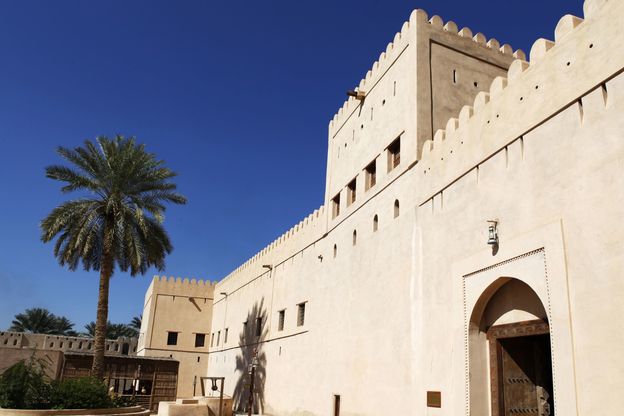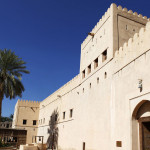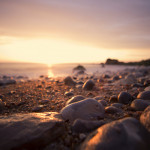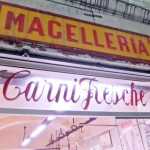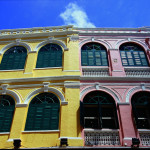Nizwa, once a capital city of Oman, is a destination offering fascinating insights into the traditions and lifestyles of the sultanate’s arid interior. Stuart Forster gives us his guide to historic Nizwa.
Most visitors to Oman arrive in Muscat, a 90-minute drive away on the country’s efficient network of highways. The capital’s waterfront Corniche and an array of museums mean it’s worth lingering at least a couple of days in Muscat. If you enjoy shopping you have the choice between modern malls and the traditional stalls of Old Muttrah Souk, whose broad, covered walkways trap the heady aroma of frankincense. The famous landmark offers shoppers a taste of what’s to come in this guide to historic Nizwa.
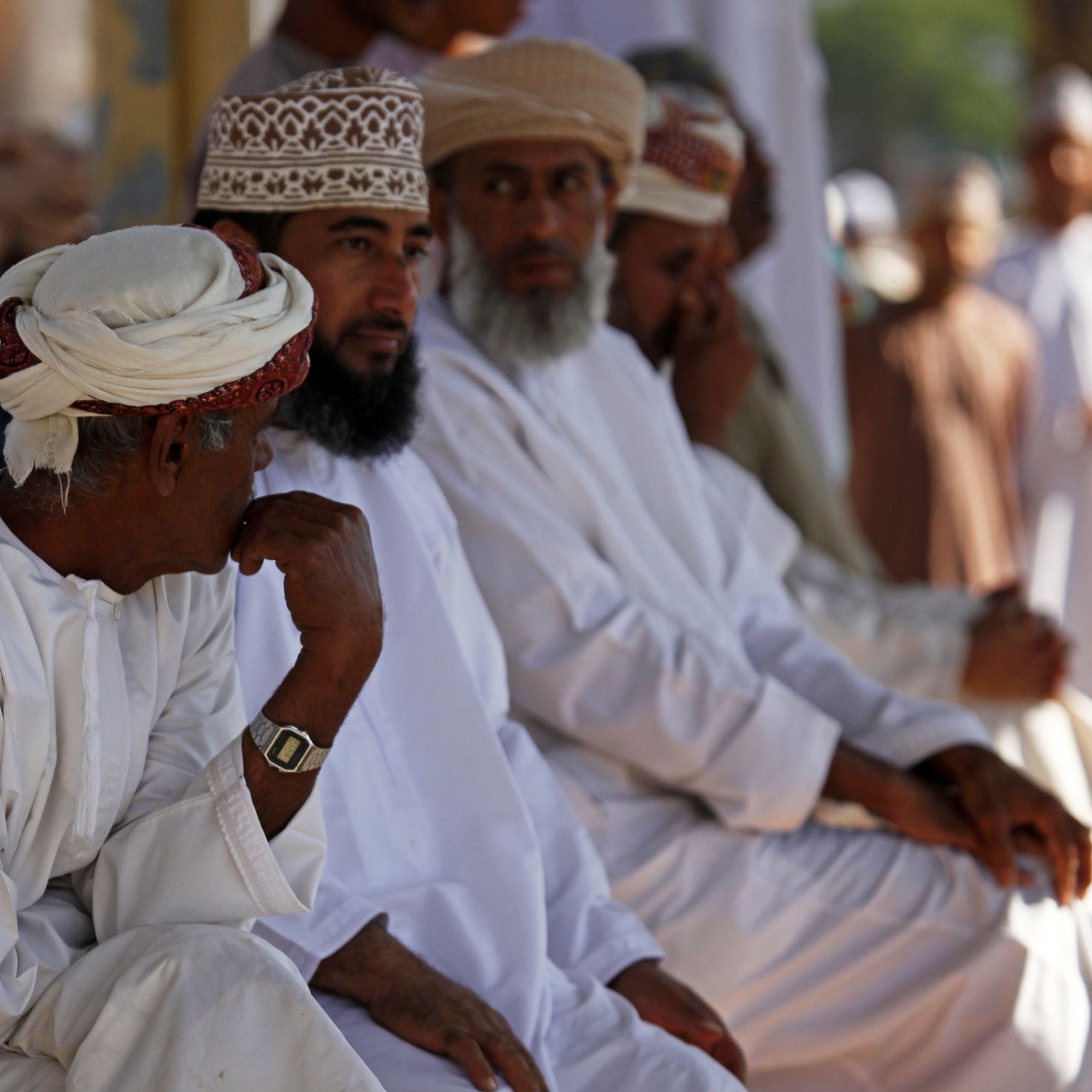
The weekly cattle market ensures Nizwa becomes busiest as the weekend approaches. On Friday mornings farmers park up their trucks on the edge of town and bring their livestock to the market, parading the animals around a circular track. Buyers, meanwhile, sit on a shaded stand in the middle of the ring or observe proceedings from the crowd around the exterior of the track. They wait there for an animal to catch their eye before entering into negotiations.
The process is fascinating to observe and one much-loved by photographers. Earnest-faced vendors continue walking, leading their animal around, until a deal is struck. In doing so they try to entice improved offers. This scene has changed little over the past century and still has an unspoilt charm, despite recent increases in the number of tourists visiting Nizwa. Locals go about their business undisturbed by pointing lenses and clicking shutters.
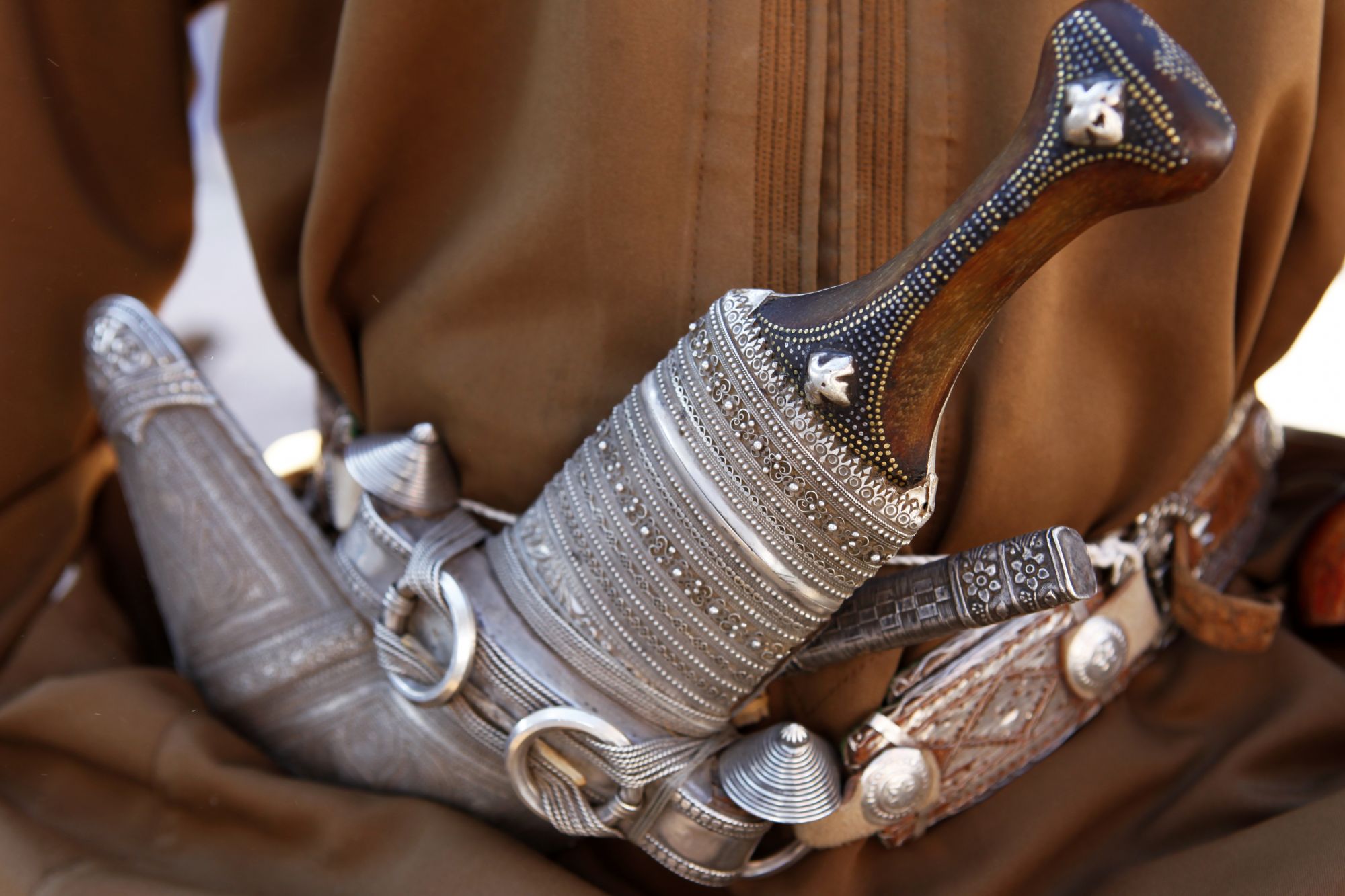
It’s worth arriving early in the day to see the cattle market at its most vibrant. Look around and you’ll see aged local men wearing the national dress of turbans with ankle-length dishdasha cotton robes crossed with belts bearing curved khanjar daggers.
The filigree silverwork on a traditional khanjar makes it a valuable souvenir. High quality jewellery and khanjars are made locally and sold in Nizwa’s shops. Prices fluctuate according to the current market price for precious metals. Frankincense, harvested from trees out in the desert, and locally produced pottery also draw the eyes of many foreign buyers in Nizwa’s souk.
Don’t be perturbed if you see locals carrying ornate carbines slung over their shoulders. Some of the barrels are decorated with silver embellishments. The antique weapons are bought and sold on market days. They are still used for hunting and are fired into the sky during Bedouin family celebrations.
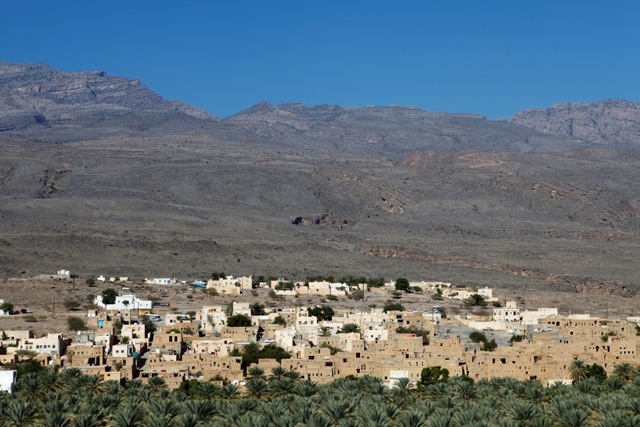
Fo a better idea of how to drive a bargain at an Arabian souk, shadow a local as they potter between stalls and go about negotiations to reach an acceptable price with vendors. Stern facial gestures signal disapproval. Voices fluctuate in volume. When the deal is struck smiles beam. The process can take several minutes.
Nizwa is located at a break in the largely barren Hajar mountain range, a natural barrier dividing the country. Until Oman’s road infrastructure was enlarged, a relatively recent achievement, the city was far from easy to reach.
In November 2010 the United Nations Development Programme named the country as the world’s most improved nation over the preceding 40 years, a period which coincides with Sultan Qaboos bin Said’s period of rule in Oman—at the start of his reign barely 10km of tarmac roads existed.
As a consequence, just a generation ago few people would visit Nizwa, other than Bedouin camel caravan drivers. They would halt in the town, which lies on a long-established trade route, to replenish their water supplies at the oasis and acquire some of the region’s highly regarded dates, harvested from palms that draw nourishment from the same source.
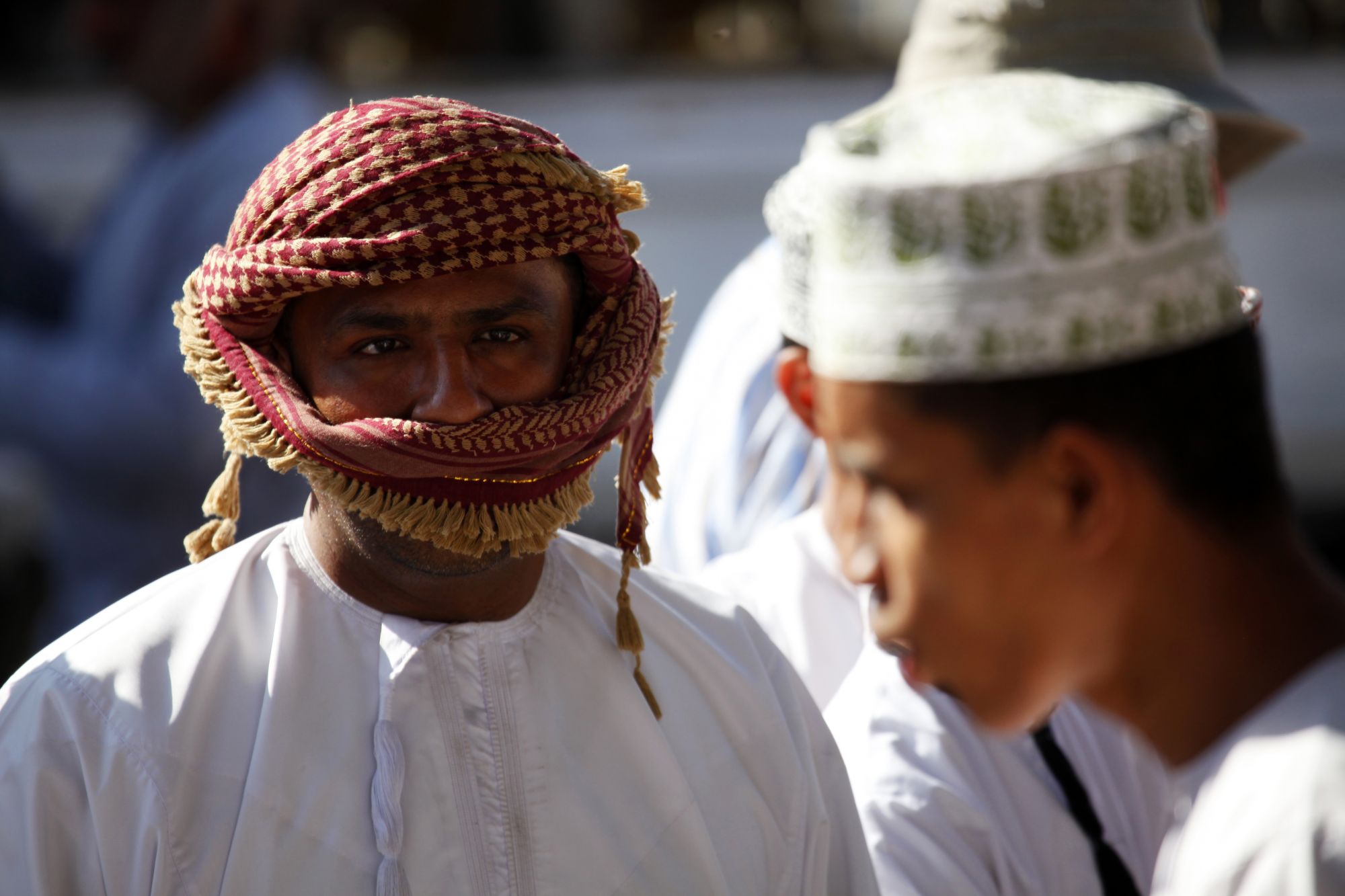
Nizwa is approximately 165km south-east of Muscat, along a broad highway that slices through an arid, undulating desert landscape which is infrequently broken by bursts of greenery and gravel dry shrub. You may think that the scenery resembles a moonscape.
Coincidentally, a handful of the rocks that drivers flash by while on the road to and from Nizwa really do come from the moon and other celestial bodies. Twenty per cent of the meteorites collected on earth over the past decade have been picked up by teams searching in the Omani desert.
The pastel coloured houses and shops of Nizwa rise from that arid plain. Arguably the most elegant building in the city is the Sultan Qaboos Jama Mosque, whose minaret and dome rival the city’s fort for the dominance of the skyline. Nizwa Fort, though, is by far the most visited monument in the city.
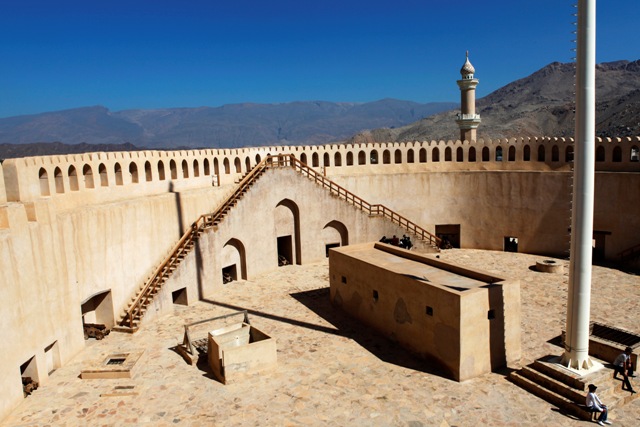
Nizwa Fort is more than 360 years old. It was built under the second Yaruba Imam when Portugal’s colonial interests in Oman were coming to an end. The well-maintained landmark provides few indications of its prodigious age.
The lower level hosts an informative museum about life within the fort and the crafts of bygone times. Most visitors, however, head straight up the narrow staircase to the circular gunnery platform, on which cannons still stand. The firing step provides fine views over the city’s streets and the dusty plain below the Hajar mountains.
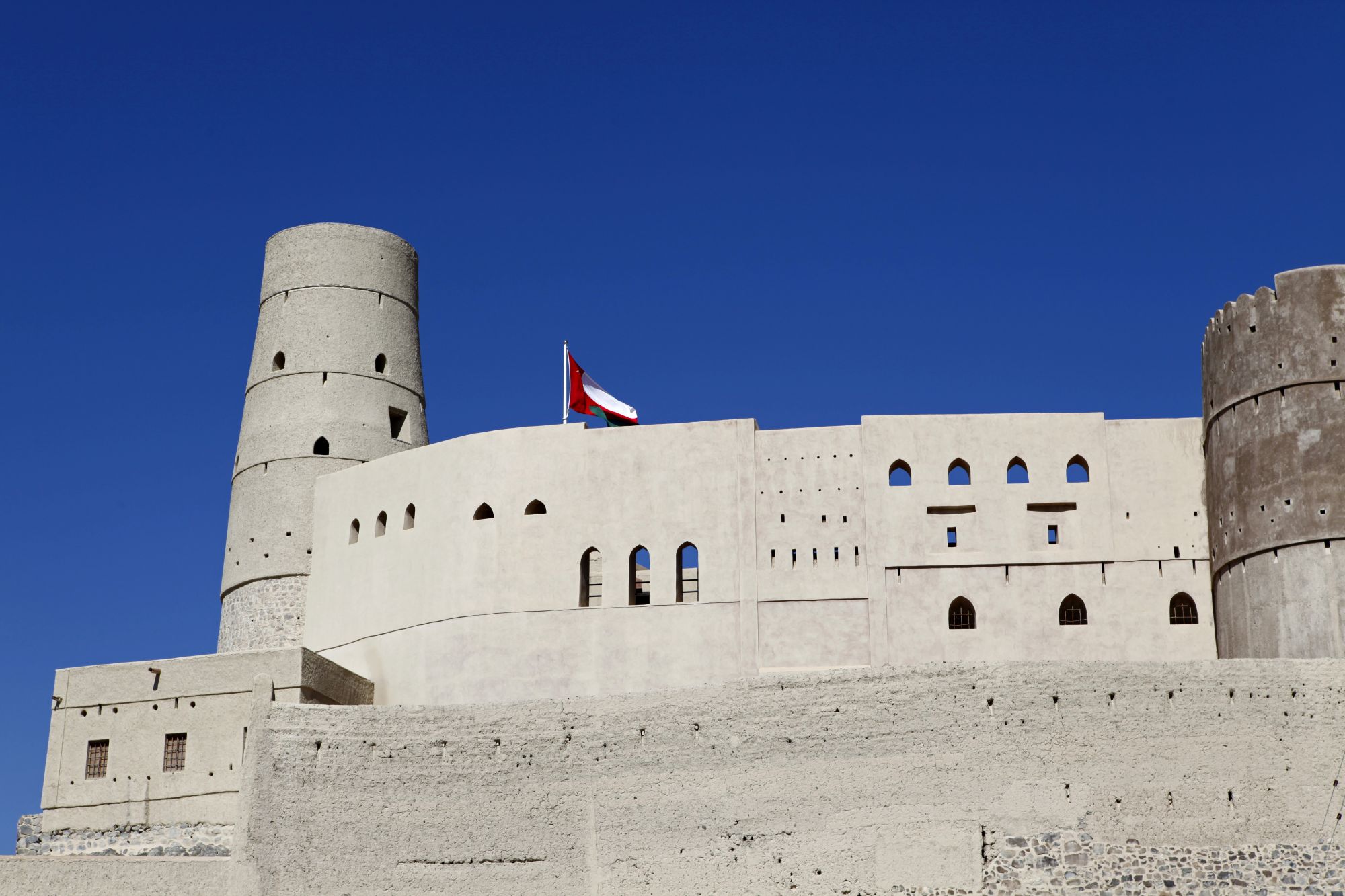
The thick, 30-metre high walls help make Nizwa’s fort the largest on the Arabian Peninsula. It’s said that the soldiers of besieging armies ran the risk of having boiling date syrup poured down onto them through holes in the walls of this imposing defensive structure.
Thanks to the road link from Muscat, Nizwa can be visited as a day trip from the Omani capital. But staying for a couple of days, as part of a tour of Oman, will allow plenty of time for leisurely discovery and to negotiate deals at the souk.
All images for this Guide to historic Nizwa (c) Stuart Forster.
Tell me more about this Guide to historic Nizwa and Oman
Take a look at the Tourism Oman website to find out more about the sultanate’s attractions.
Don’t miss this when you’re visiting Oman
If you’re visiting Nizwa why not drive to Bahla, 40km away, to see examples of Oman’s Aflaj system of irrigation channels? Sections of the ingeniously designed network of waterways are collectively designated as a UNESCO World Heritage Site. Bahla also has a sizable fortress, built to protect one of the most important nodes on one of the Arabian Peninsula’s wealthiest trade routes.
What to eat when visiting Nizwa
Don’t miss the opportunity to taste some of Nizwa’s locally grown dates. You may be offered them along with coffee, served in petite cups from traditional dallah coffee pots. Shake you cup to indicate you’ve had your fill of coffee, otherwise there’s a good chance you’ll be poured more.
Where to stay in Nizwa
The Golden Tulip Nizwa hotel is large 4-star hotel on the outskirts of the city with a swimming pool and a sauna.
How to get to Nizwa
Oman Air operates flights between London Heathrow to Muscat International Airport.

